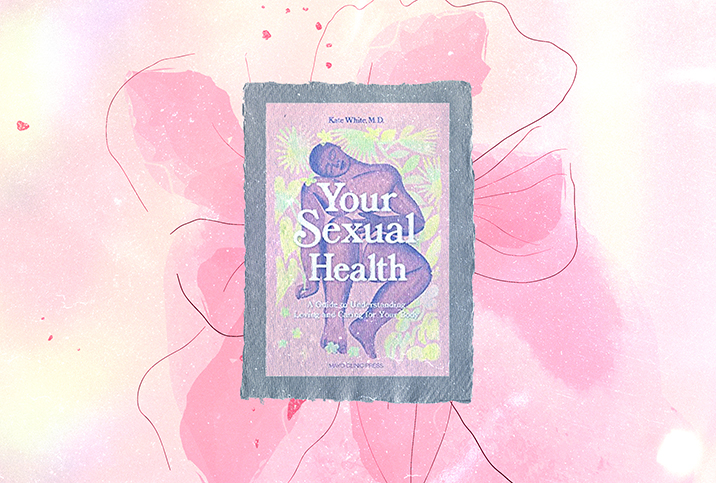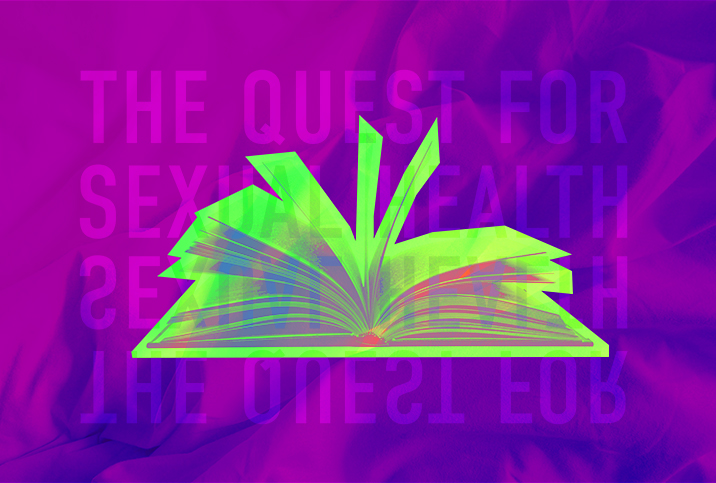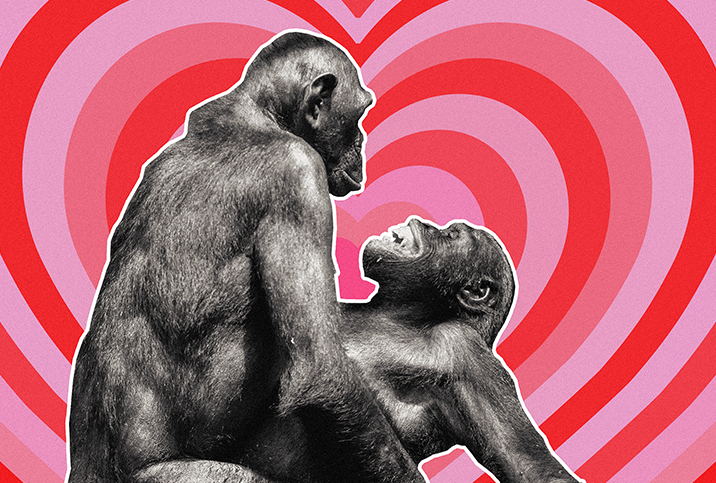Between the Pages: 'Been There, Done That: A Rousing History of Sex'

Rachel Feltman, the former executive editor of Popular Science, an American digital magazine, loves learning new facts and sharing them with people, often in an irreverent but compassionate way. Sexual health is among her favorite topics to cover, both for its importance and how heavily it's been stigmatized.
Feltman's new book, "Been There, Done That: A Rousing History of Sex," busts many myths about sex—both in the human and animal worlds—while imparting plenty of bizarre trivia from ancient times to the present day.
In this exclusive interview with Giddy, Feltman discusses why she wrote "Been There," along with duck penises, gay penguins and much, much more.
Editor's note: This interview has been edited for length and clarity.
Why did you decide to write this book?
Feltman: In thinking about things that I felt were worth a whole book, sexual health was an obvious answer to me, and one where I felt like really being irreverent and light-hearted but also welcoming and compassionate as possible would be a good fit. I started out really focused on STIs [sexually transmitted infections], specifically, because that aspect of sexual health is what I covered most as a science writer. I really started to think more and more about this idea of sexuality and the history of sex more broadly.
A lot of what people think of as being normal or healthy and a lot of what people take for granted as being true is based on not real truth or hard facts. A lot of it is very subjective and very relative, and changes a lot based on where you are in the world and at what point in history. I thought making that clear to people might be helpful. Then I did what I always do, which is learn a bunch of really bizarre stuff and try to put it together in a way that's hopefully at least a little bit entertaining.
You open the book discussing ducks' large and horrific penises. I also had no idea that only 3 percent of birds even have a penis.
As a science writer, duck evolution and, specifically, how their genitals evolved comes up a lot. It's a great case study of how evolution can work. It's the idea of an evolutionary arms race, because we see that duck vaginas are really complicated. They have these twists, turns and false passages. And then you see those duck penises are really horrifying. They're like spring-loaded, they're sometimes barbed and they're quite large relative to the size of the bird.
When evolutionary biologists look at ducks, it seems pretty clear the duck vagina is evolving to try to dissuade aggressive behavior. It's making it less likely for these really aggressive male ducks to succeed in impregnating a female duck. The male duck evolution is just doing whatever it can to make that aggression keep being a viable strategy.
This evolution story is a great way to explain how sexual competition can work in that very adversarial way.
This evolution story is a great way to explain how sexual competition can work in that very adversarial way. I came across this figure that only 3 percent of bird species actually have penises at all. I knew that birds have a cloaca, which is an all-purpose opening. But I guess I hadn't internalized the idea that there might not be a phallus in there. When I think about bird genitals, I think about duck penises just because they're the loudest, scariest and funniest to talk about. That felt like a great example of something that happens again and again in talking about biology and natural science and sex.
We internalize that there is something that is the normal blueprint and that, yes, some animals evolved in a different way. But that's what sex is, that's what sexual reproduction is and that's what male genitals are. It's really based on nothing. The natural world is much more complex than that. That's why I opened my book with several thousand words about how horrible duck penises are [laughs].
Tell us a little about the interesting sexual behaviors of penguins.
If you're talking about queer animal sex, gay penguins went mainstream before most people were willing to admit how queer the animal kingdom is. We had these headline stories about male penguins in zoos coupling up. I wanted to do a deeper dive on the gay penguin thing because there is this slight over-conception that all of those incidences are just because these are penguins in captivity, that this is a weird thing that happens when we lock animals up in zoos. It's not natural.
Of course, when we look at the natural world, there are tons of what we could anthropomorphize as gay, queer sex, couplings and family units in nonhuman animals. Penguins are no exception. But there's another penguin sex story that's important in thinking about all of our biases about the natural world. There was this naturalist, George Murray Levick, in Antarctica in 1911-12 who observed a bunch of Adélie penguins and he took a lot of notes. He referred to them as hooligans. They were really a bad bunch. As is the case with a lot of juvenile animals, they were really brutally horrible to each other and other members of their species.
'When we look at the natural world, there are tons of what we could anthropomorphize as gay, queer sex, couplings and family units in nonhuman animals.'
In addition to being horrified that they were killing other members of their own species and indulging in necrophilia, he noted that sometimes the boy penguins have sex with each other. First of all, it's just very funny for that to have been lumped into the same category, but he wanted it all to be published. You see over and over in the history of natural science, they'll be like "only educated gentlemen can handle this information." He didn't want it in the main paper, but he did want to publish this information, and the museum wouldn't let him because they said, "This is obscene."
This is just one instance we know about because a historian was able to find the paper trail. You have to imagine there were many other instances we don't know about where our early notes from naturalists on how animals behaved were really colored by their own perception of what they could write down. We have this idea that penguins are these well-behaved, monogamous little men in little tuxedos. But there are many different kinds of penguins and they all have different behavior and sometimes that behavior could be described as gay.
You write that 'any kind of sex or sexual desire has happened somewhere at some point at least once, if not repeatedly.'
Yeah, I think there's so much that people are shamed for and that people feel the need to repress or feel badly about. Meanwhile, people are very much socialized to treat their sexual partners very badly, physically and emotionally. We just take for granted that dating will be awful and sex will be awful. Speaking personally, if you're a woman who dates men, men will be awful to you. We really accept all of that as normal. And then we make people feel bad for having a fluid sexual orientation or a gender identity other than the one they were assigned at birth, or for BDSM or something.
What I really want people to come away from my book with is the sense that at the societal level for the last few hundred years, people have been made to feel really bad for the wrong things. You should worry about communicating well with your partners, seeking consent, making sure that you're recognizing how much power you hold in the dynamic and that you're taking care of the people around you. Everything else is really OK and also not new. There is no modern plague of queerness. People have been very queer for as long as people have existed, probably longer. And it's not even the first time that people have been open about being queer.
We have this sense that things have progressed linearly and that is just really not true. It's this very myopic, Western viewpoint of what culture is and how culture has evolved. My book is like the very briefest introduction to how much else has happened through history and how much else is out there. I hope that, as a starting point, it gets people asking deeper questions about the history of sex.


















